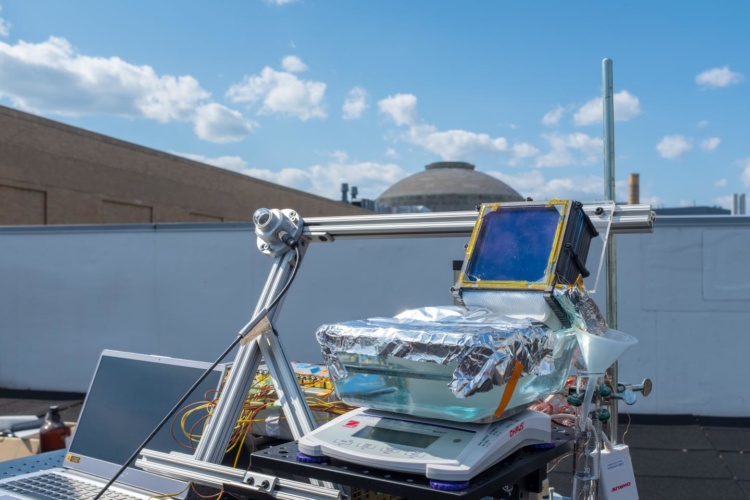
Known as the thermally-localised multistage solar still (TMSS), the device evaporates and condenses water numerous times, working in much the same way as alcohol stills. It has multiple layers of flat solar evaporators and condensers, positioned in a vertical array with an insulating aerogel at the top.
Solar desalination makes efficiency gains with ‘hot spots’
US team develops desalination process for hypersaline brines
At each stage, heat released by the previous stage is harnessed rather than wasted, meaning energy from the sun is converted to evaporation energy with an overall efficiency of 385 per cent. On a rooftop in MIT, the TMSS produced 5.78 litres of water a day per square metre of solar material. According to MIT professor of mechanical engineering Evelyn Wang, this is twice as much water as any other passive solar-powered desalination system has produced.

"When you condense water, you release energy as heat," said Wang. "If you have more than one stage, you can take advantage of that heat."
The unit was built mostly from inexpensive materials such as a commercial black solar absorber and paper towels that acted as a capillary wick to carry the water into contact with the absorber. It’s estimated that a device to support the drinking requirements of a family could be developed for as little as $100. For the prototype used on the MIT roof, the team incorporated 10 layers of evaporators and condensers, but different combinations of materials and additional layers could further improve performance.
“Theoretically, with more desalination stages and further optimisation, such systems could reach overall efficiency levels as high as 700 or 800 per cent,” said MIT doctoral student Lenan Zhang.
The researchers plan further experiments to explore different materials and configurations and to test the durability of the system under realistic conditions. They will also work on translating the design of their lab-scale device into something suitable for consumer use.
The team's research appears in the journal Energy & Environmental Science.




Swiss geoengineering start-up targets methane removal
No mention whatsoever about the effect of increased methane levels/iron chloride in the ocean on the pH and chemical properties of the ocean - are we...